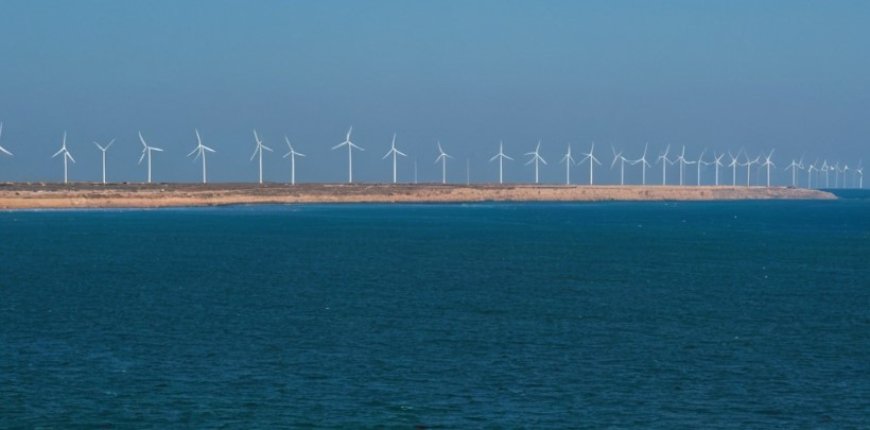Morocco's Ambitious Wind Farm Project Near Essaouira: A Step Towards Sustainable Energy
This article discusses Morocco's ambitious wind farm project near Essaouira, which aims to harness the region's strong wind potential for sustainable energy production. The project, backed by the Moroccan Agency for Sustainable Energy, is set to significantly contribute to the country's renewable energy goals, reduce carbon emissions, and enhance energy security. By investing in wind energy, Morocco is positioning itself as a leader in the transition to clean energy in Africa.

Introduction
Morocco is set to embark on a groundbreaking venture by constructing a massive wind farm off the coast of Essaouira. This initiative is a response to a study by the Moroccan Agency for Sustainable Energy, which highlights the region's significant wind potential. The project, including the Jbel Lahdid wind farm, will require an investment of approximately 2.67 billion dirhams and is expected to generate a capacity of 270 MW through around fifty wind turbines. This development aligns with Morocco's energy strategy to boost renewable energy use and reduce carbon emissions.
Project Overview
The Moroccan government plans to develop a major wind farm on its Atlantic coast near Essaouira, capitalizing on the region's strong wind potential. The Moroccan Agency for Sustainable Energy has revealed that the wind speed along this coast is particularly favorable for wind energy production. The Jbel Lahdid wind farm project, expected to be operational by 2024, represents an investment of 2.67 billion dirhams and aims to produce 270 MW of renewable energy. This wind farm is part of a broader initiative to increase the country's wind capacity and contribute to the energy transition while creating local jobs and supporting the region's economic development.
Environmental Benefits of the Jbel Lahdid Wind Farm
The Jbel Lahdid wind farm, located on Morocco's Atlantic coast near Essaouira, offers several significant environmental advantages:
- Reduction of CO2 Emissions: The farm is expected to avoid the emission of approximately 475,200 tons of CO2 annually, contributing to the fight against climate change and improving air quality.
- Renewable Energy Production: With a capacity of 270 MW, the Jbel Lahdid wind farm is part of a larger program aimed at reaching 1,000 MW of wind energy in Morocco. This helps diversify the country's energy sources and reduce its reliance on fossil fuels.
- Harnessing Wind Potential: The project leverages the region's strong wind potential, where wind speed is high, making it an ideal location for wind energy production.
- Sustainable Development: By integrating environmentally friendly construction practices and avoiding inhabited areas, the project aims to minimize its impact on local biodiversity and ensure harmonious coexistence with the natural environment.
- Infrastructure Development: The development of access roads and related infrastructure in the region not only facilitates access to the wind farm but also contributes to the connectivity and socio-economic development of surrounding communities.
- Green Jobs: The wind farm will generate direct and indirect jobs, contributing to the local economy while promoting careers in the renewable energy sector.
Contribution to CO2 Emission Reduction
The Jbel Lahdid wind farm will contribute to the reduction of CO2 emissions in several significant ways:
- Avoidance of CO2 Emissions: The project is designed to avoid the emission of approximately 475,200 tons of CO2 per year. This is achieved by replacing energy produced from fossil sources with clean wind energy, directly reducing the amount of greenhouse gases released into the atmosphere.
- Replacement of Fossil Fuels: The Jbel Lahdid wind farm is expected to replace approximately 158,103 tons of oil equivalent per year. This replacement of fossil fuels with a renewable energy source helps decrease Morocco's dependence on polluting energies and reduce its carbon footprint.
- Contribution to National Energy Strategy: This wind farm is part of a broader program aimed at achieving 52% of installed electrical capacity from renewable sources by 2030. By integrating more wind energy into the country's energy mix, Morocco strengthens its efforts to combat climate change.
- Improvement of Air Quality: By avoiding emissions of pollutants such as nitrogen oxides (NOx) and sulfur dioxide (SO2), the farm will also contribute to improving local air quality, which has benefits for public health and the environment.
Conclusion
In summary, the Jbel Lahdid wind farm represents a major advancement for Morocco in its transition towards sustainable energy sources, while offering significant environmental and socio-economic benefits. As the country continues to invest in renewable energy, projects like these will play a crucial role in reducing greenhouse gas emissions and enhancing environmental quality.

